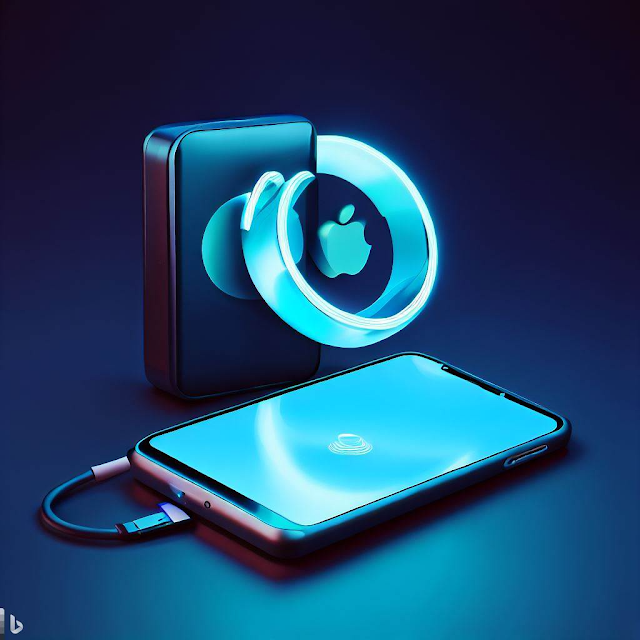While Apple offers the convenience of iCloud backup, it's essential to provide users with alternative options. This article explores the need for an option to back up iOS devices like iPhones and iPads to local NAT storage drives, providing users with more control, cost-effectiveness, and flexibility.
Importance of Device Backups:
Backing up our devices is crucial to safeguarding our data. In the event of device loss, damage, or data corruption, backups serve as a safety net, ensuring that our valuable information and memories are not lost forever. Apple has recognized this need and offers various backup solutions, including iCloud backup and Time Machine backup.
Convenience of Time Machine Backup:
Apple's Time Machine backup feature has revolutionized the way Mac users protect their data. With Time Machine, users can effortlessly back up their entire system to a local network-attached storage (NAS) drive, providing peace of mind and easy restoration options. This feature has proven to be a valuable asset for Mac users.
Limitations of iCloud Backup:
While iCloud backup has its merits, it does come with certain limitations. One of the primary concerns is the limited free storage space provided by Apple. As iOS devices continue to capture higher-resolution photos and videos, the 5 GB of free iCloud storage quickly becomes insufficient. This limitation forces users to opt for costly iCloud storage plans, which may not be feasible for everyone.
Need for Local Network Backup:
To address the limitations of iCloud backup, Apple should introduce an option to back up iOS devices to local network-attached storage (NAT) drives. This would provide users with an alternative method of safeguarding their data without solely relying on iCloud.
Benefits of Local NAT Storage Drive Backup:
Backing up iOS devices to local NAT storage drives offers several advantages. Firstly, it empowers users with greater control over their backups. Users can customize the backup process, schedule backups according to their preference, and easily access their data locally.
- Empowering Users with Choice: By introducing the option to back up iOS devices to local NAT storage drives, Apple would empower users to choose the backup method that suits their needs. Some users might prefer the convenience and accessibility of iCloud, while others may prioritize the control and cost-effectiveness of local backups.
- Enhanced Data Privacy and Security: Local NAT storage drive backups also address concerns related to data privacy and security. While iCloud implements robust security measures, some users may prefer keeping their data within their local network, minimizing the exposure to potential online threats.
- Addressing Cost Concerns: For users who find iCloud storage plans expensive, local NAT storage drive backups offer a cost-effective alternative. Users can utilize existing storage devices or invest in affordable NAT drives with ample capacity, providing a budget-friendly backup solution.
- User-Friendly Backup and Restoration Process: Apple should ensure that the process of backing up and restoring data to local NAT storage drives is seamless and user-friendly. The backup settings should be easily accessible, and the restoration process should be straightforward, ensuring that users can retrieve their data effortlessly whenever they need it.
Apple's Opportunity to Provide a Solution:
Apple, renowned for its commitment to user experience and innovation, has an opportunity to cater to the diverse needs of its users by enabling local NAT storage drive backups for iOS devices. By doing so, Apple would demonstrate their dedication to user choice, data privacy, and flexibility, further enhancing the iOS ecosystem.
Like Time Machine backup for Macs, the option to back up iOS devices to local NAT storage drives would be a valuable addition to Apple's ecosystem. It would provide users with more control, cost-effectiveness, and flexibility when it comes to safeguarding their data. By offering this alternative, Apple can cater to a wider range of user needs and ensure that data backup and restoration remain accessible to all.
Frequently Asked Questions:
- Q: Can I currently back up my iOS device to a local NAT storage drive? A:No, currently, Apple only provides iCloud backup as the primary backup option for iOS devices.
- Q: Why is local NAT storage drive backup important? A: Local NAT storage drive backup offers users more control, cost-effectiveness, and flexibility in safeguarding their data, allowing them to choose a backup method that suits their needs.
- Q: Are local NAT storage drive backups more secure than iCloud backups? A: While iCloud implements robust security measures, local NAT storage drive backups can provide an added layer of privacy and security by keeping data within the local network.
- Q: How can local NAT storage drive backups address cost concerns? A: By utilizing existing storage devices or investing in affordable NAT drives, users can avoid the costs associated with iCloud storage plans, making local backups a cost-effective solution.
- Q: Will Apple consider implementing local NAT storage drive backup for iOS devices? A: While Apple's decisions regarding product features are not disclosed in advance, user feedback and evolving needs often influence their development roadmap.


